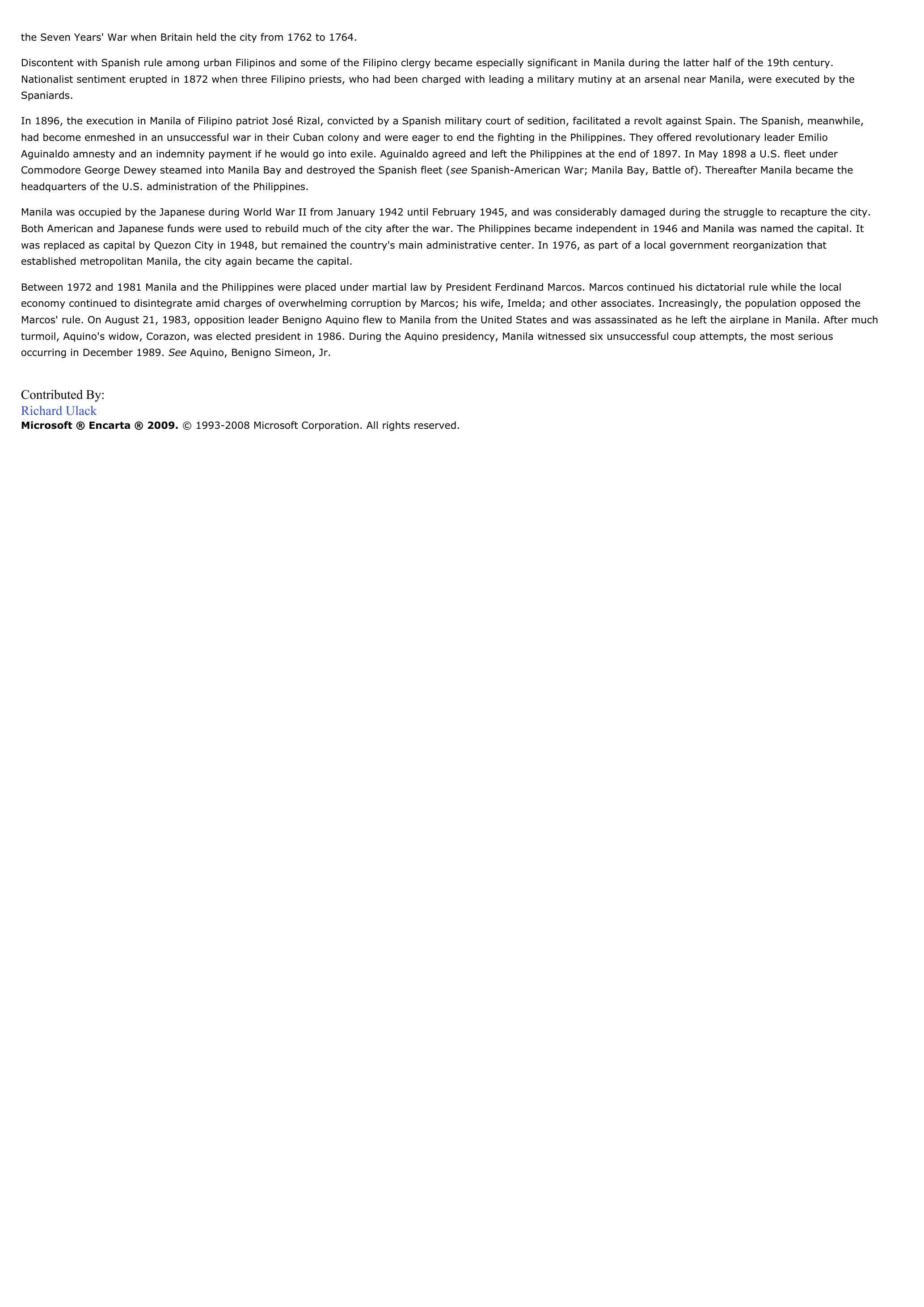Manila - geography.
Publié le 27/05/2013

Extrait du document
«
the Seven Years' War when Britain held the city from 1762 to 1764.
Discontent with Spanish rule among urban Filipinos and some of the Filipino clergy became especially significant in Manila during the latter half of the 19th century.Nationalist sentiment erupted in 1872 when three Filipino priests, who had been charged with leading a military mutiny at an arsenal near Manila, were executed by theSpaniards.
In 1896, the execution in Manila of Filipino patriot José Rizal, convicted by a Spanish military court of sedition, facilitated a revolt against Spain.
The Spanish, meanwhile,had become enmeshed in an unsuccessful war in their Cuban colony and were eager to end the fighting in the Philippines.
They offered revolutionary leader EmilioAguinaldo amnesty and an indemnity payment if he would go into exile.
Aguinaldo agreed and left the Philippines at the end of 1897.
In May 1898 a U.S.
fleet underCommodore George Dewey steamed into Manila Bay and destroyed the Spanish fleet ( see Spanish-American War; Manila Bay, Battle of).
Thereafter Manila became the headquarters of the U.S.
administration of the Philippines.
Manila was occupied by the Japanese during World War II from January 1942 until February 1945, and was considerably damaged during the struggle to recapture the city.Both American and Japanese funds were used to rebuild much of the city after the war.
The Philippines became independent in 1946 and Manila was named the capital.
Itwas replaced as capital by Quezon City in 1948, but remained the country's main administrative center.
In 1976, as part of a local government reorganization thatestablished metropolitan Manila, the city again became the capital.
Between 1972 and 1981 Manila and the Philippines were placed under martial law by President Ferdinand Marcos.
Marcos continued his dictatorial rule while the localeconomy continued to disintegrate amid charges of overwhelming corruption by Marcos; his wife, Imelda; and other associates.
Increasingly, the population opposed theMarcos' rule.
On August 21, 1983, opposition leader Benigno Aquino flew to Manila from the United States and was assassinated as he left the airplane in Manila.
After muchturmoil, Aquino's widow, Corazon, was elected president in 1986.
During the Aquino presidency, Manila witnessed six unsuccessful coup attempts, the most seriousoccurring in December 1989.
See Aquino, Benigno Simeon, Jr.
Contributed By:Richard UlackMicrosoft ® Encarta ® 2009. © 1993-2008 Microsoft Corporation.
All rights reserved..
»
↓↓↓ APERÇU DU DOCUMENT ↓↓↓
Liens utiles
- Manila - geography.
- Manila - geografía.
- Manille ou Manila, capitale de la République des Philippines, dans le sud-ouest de l'île de Luçon.
- Manille ou Manila, capitale de la République des Philippines, dans le sud-ouest de l'île de Luçon.
- Tokyo - geography.

































